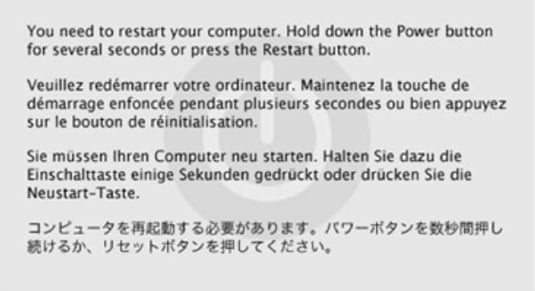

- TURNING OFF DASHBOARD MAC OS X SNOW LEOPARD FULL
- TURNING OFF DASHBOARD MAC OS X SNOW LEOPARD SOFTWARE
- TURNING OFF DASHBOARD MAC OS X SNOW LEOPARD WINDOWS
TURNING OFF DASHBOARD MAC OS X SNOW LEOPARD FULL
"You can make a window in an app full screen with one click, switch to another app's full-screen window with a swipe of the trackpad, and swipe back to the desktop to access your other apps - all without ever leaving the full-screen experience.

TURNING OFF DASHBOARD MAC OS X SNOW LEOPARD SOFTWARE
While elements of iLife already have full screen mode, Apple are promising more full screen apps in this operating system either from them or from third party software developers. Yep another ode to the iPad again, this time it's all about going full screen on your apps. Anyone that uses two-finger scrolling on their MacBook will tell you they won't go back. Why you'll want it: It's all about making your work flow easier and if that means you can start dancing your fingers around a trackpad, rather than having to press multiple key strokes on your keyboard or move around your mouse, that's got to be a good thing. It's either going to be a great thing or something that you find yourself having to remember as to what bit does what, as your screen dances the fandango when you get it wrong. While Snow Leopard offers some scrolling and gesture support, Mac OS X Lion really goes to town with rubber-band scrolling, page and image zoom, full-screen swiping, and plenty more. If that's the case you'll be wanting to swipe and gesture your way around the interface like never before.

Why you'll want it: It will mean you start to use Dashboard widgets again, something you probably aren't doing at the moment, as well as being able to quickly find stuff you've got open.Īpple believes that if you are going to own a Mac, chances are you already own an iPad or an iPhone.
TURNING OFF DASHBOARD MAC OS X SNOW LEOPARD WINDOWS
You'll be able to see your open windows grouped by app, thumbnails of your full-screen apps, and Dashboard, arranged in a unified view. Whether it's because Dashboard hasn't really taken off, or because Apple realises that lots of people use Expose all the time, none the less it's going to be considerably helpful for those constantly losing application windows on their Mac. Mac's have already got Expose, but mission control aims to supersize this by giving "you a bird's-eye view of everything including Dashboard and full-screen apps all in one place. It takes just a swipe to see multiple pages of apps, and you can arrange them any way you like by dragging icons to different locations or by grouping apps in folders. Your open windows fade away, replaced by an elegant, full-screen display of all the apps on your Mac. "Just click the Launchpad icon in your Dock. "Launchpad gives you instant access to your apps - iPad style," Apple explains. Why you'll want it: Anything that will makes the OS look better will make working with it better, and from what we've seen this will be tweaks rather than a complete overhaul that you panic over when you see it.Īpple calls this a "home for your apps", but what it really means is that instead of an applications folder that sits buried deep in your computer you can now access them at the press of a button. While from the look of things Apple hasn't gone crazy and changed everything, there will be changes nonetheless.Ĭalled Aqua, it brings new popovers, overlay scrollbars, and much more and with it a more iOS feel, as things appear and disappear when needed. Still that doesn't mean we can't look at some of the new features we'll be getting and what we should start to get excited about, does it now?Ī new OS means a new look and feel to all the buttons and menu systems that you use. Their penance? It's likely to be bug ridden, slower than you and us would find acceptable and generally not really ready for primetime. That means that while the likes of you and us have to wait a couple more months, developers creating apps for the new operating system get play with the new software early. So, here's the extensive line-up and explanation of the new bells and whistles of Lion that we first published back in February.įirst announced in October 2010, Apple's next generation operating system Mac OS X Lion has been seeded out to developers ahead of a summer 2011 public launch. UPDATE: While Steve Jobs and co demonstrated Mac OS X Lion at WWDC 2011 in San Francisco, it occurred to us that there is little or nothing new to the features that we haven't written about already.


 0 kommentar(er)
0 kommentar(er)
